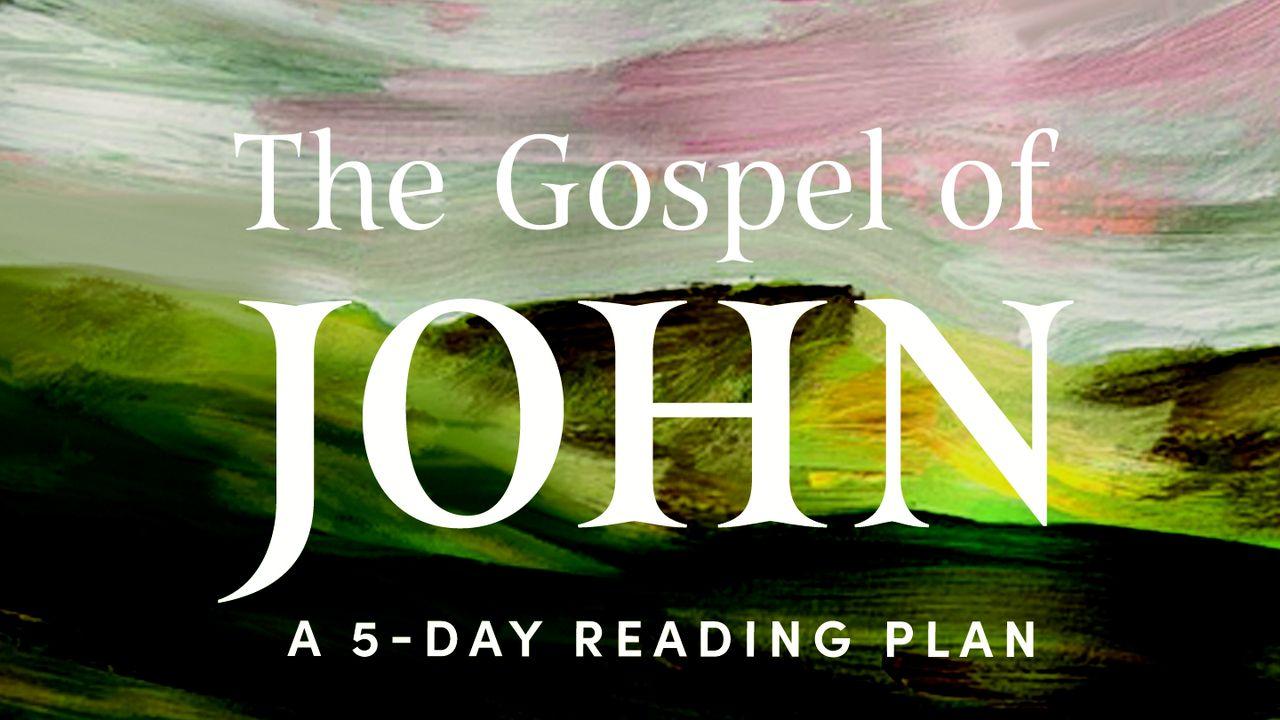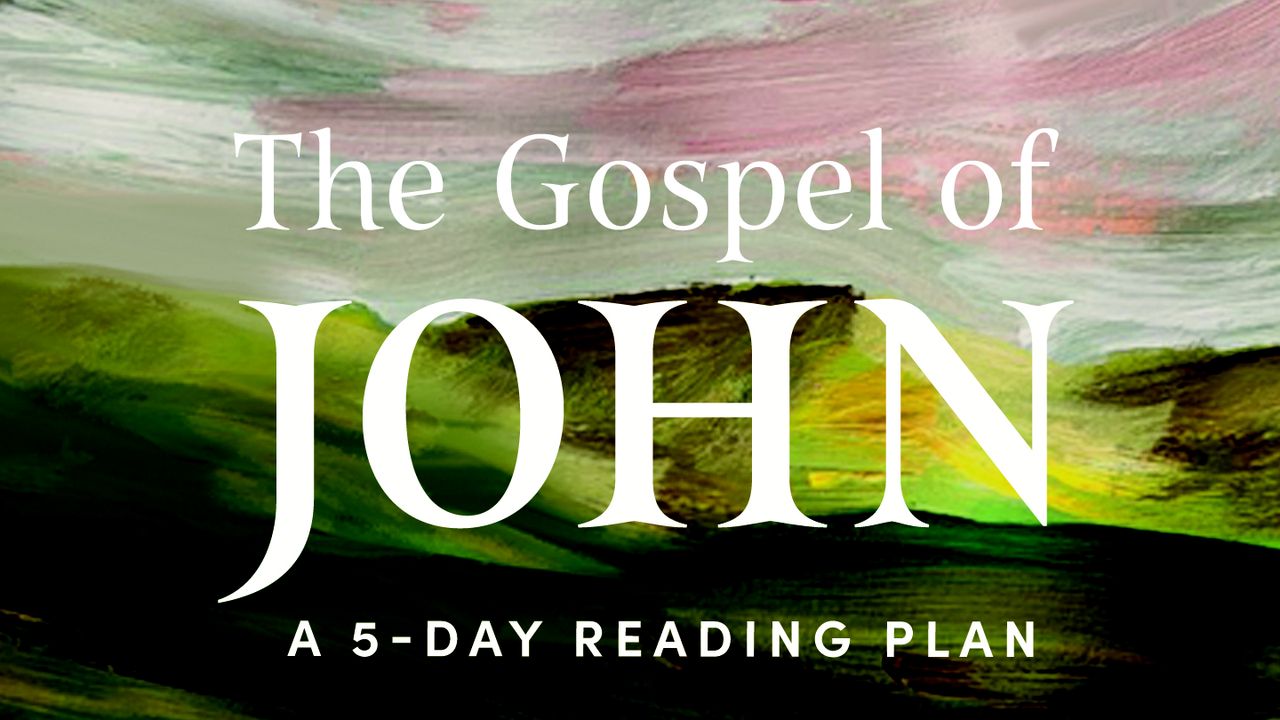Lasīšanas plāna apraksts
The Gospel of John: Savoring the Peace of Jesus in a Chaotic WorldParaugs

As a pastor, my husband has officiated many weddings where things went wrong. Once, he forgot to have the audience sit down, and they stood for the entire ceremony. Another time, a truck ran over the water main at the reception hall, leaving them with no water at the reception. These examples reveal that no matter how much you plan, unexpected things can and do happen!
Running out of food or beverages at a wedding today would be embarrassing for the hosts. In biblical times, it was catastrophic. A groom could face a lawsuit over this lapse in hospitality.5 And this kind of social embarrassment could have been joked about by people in their community for years.6 I love how Mary chose to get involved, bringing the situation to Jesus.
I usually seek logical solutions for difficult situations. Often, I’ll call a friend or mentor for advice. Other times, I look to Google® or YouTube® for answers.
Like Mary, we should bring the sticky situations we encounter directly to Jesus.
Jesus referred to His mom as “woman,” (v. 4) While that sounds almost rude through our cultural filters, this was a title of respect—like saying, ma’am or madam.7 Mary was His earthly mother, but He was shifting into public ministry and to His heavenly Father’s business.
Jesus’s response to Mary that His hour had not yet come is interesting. In ancient sources, one’s hour or time referred to death. Scholar Craig Keener wrote, “Jesus may be saying, ‘Once I begin performing signs, I start toward the cross.’”8
Even though Jesus initially pushed back, He did perform His first miracle, or sign, as John called it. This act has less application in debates about alcoholic beverages and more to teach us about Jesus’s identity. He revealed His glory.
I noticed that Jesus’s first miracle recorded in John was high in quantity and quality. Each stone jar filled with water for ritual cleansing held twenty to thirty gallons. Jesus made up to 180 gallons of wine! Most commentators agree that “this large amount is a sign of the abundance of God’s grace.”9 To use the stone jars for wine would have violated custom, but Jesus valued people over customs. Also, note that Jesus replaced Old Testament law (water for ceremonial cleansing) with abundant grace (high-quality wine), ultimately pictured in the communion supper where wine represents His blood.
Jesus brought fullness where there was emptiness and joy where there was disappointment. He longs to do that in our lives as well.
The first step to discovering the fullness and joy evidenced in Jesus’s first sign is to do what He says. Obedience places us on the path to God’s peace. John established Jesus’s divinity at the beginning of this Gospel and now shows us His glory. Jesus’s disciples believed in Him. We can choose to do the same. If we want God’s peace, we must live according to His plan.
Once Jesus began His ministry, He traveled from Galilee to Jerusalem to celebrate the Passover with His disciples. There, He continued to reveal Himself as the Son of God.
Jesus offers us abundant grace but desires His people to follow the Father’s plan. In Jesus’s day, that didn’t include using the temple for profit. The condition of the temple was an indication of the spiritual condition of the nation. The people were manipulating religion for money. Jesus knew there was no peace in that practice, then or now. He spoke boldly about abuses. The religious leaders asked for a sign. Jesus responded with prophetic words about destroying the temple and then rebuilding it in three days. This confounded the leaders because Herod’s temple, which was started in 20 BC, was not completed at the time of this encounter. However, Jesus wasn’t talking about a building but His body. This kind of misunderstanding of spiritual truth, where hearers misinterpreted Jesus’s words, is found throughout John’s Gospel.10
Jesus is full of grace but also truth. Peace in following Him is not always found in the path of least resistance. Sometimes, doing what He says means doing hard things.
Today, we focused on this truth: If we desire the peace of Jesus, then we must do what He says.
5\. R. C. Sproul, John: An Expositional Commentary (Sanford, FL: Ligonier Ministries, 2009), 20.
6\. Zondervan Illustrated Bible Backgrounds Commentary, vol. 2A, eds., Craig S. Keener (Grand Rapids, MI: Zondervan, 2019), 21.
7\. Keener, 21. Also see Edward W. Klink III, John: Exegetical Commentary on the New Testament (Grand Rapids, MI: Zondervan Academic, 2016), 164.
8\. Ibid.
9\. Sproul, 22.
10\. Warren W. Wiersbe, Be Alive (Colorado Springs, CO: David C Cook, 2009), 43.
Raksti
Par šo plānu

Join this 5-day reading plan from Melissa Spoelstra to find encouragement to slow down and linger with the living Word. You’ll appreciate the pace of the Savior, who never hurried but completed all the Father called Him ...
More
